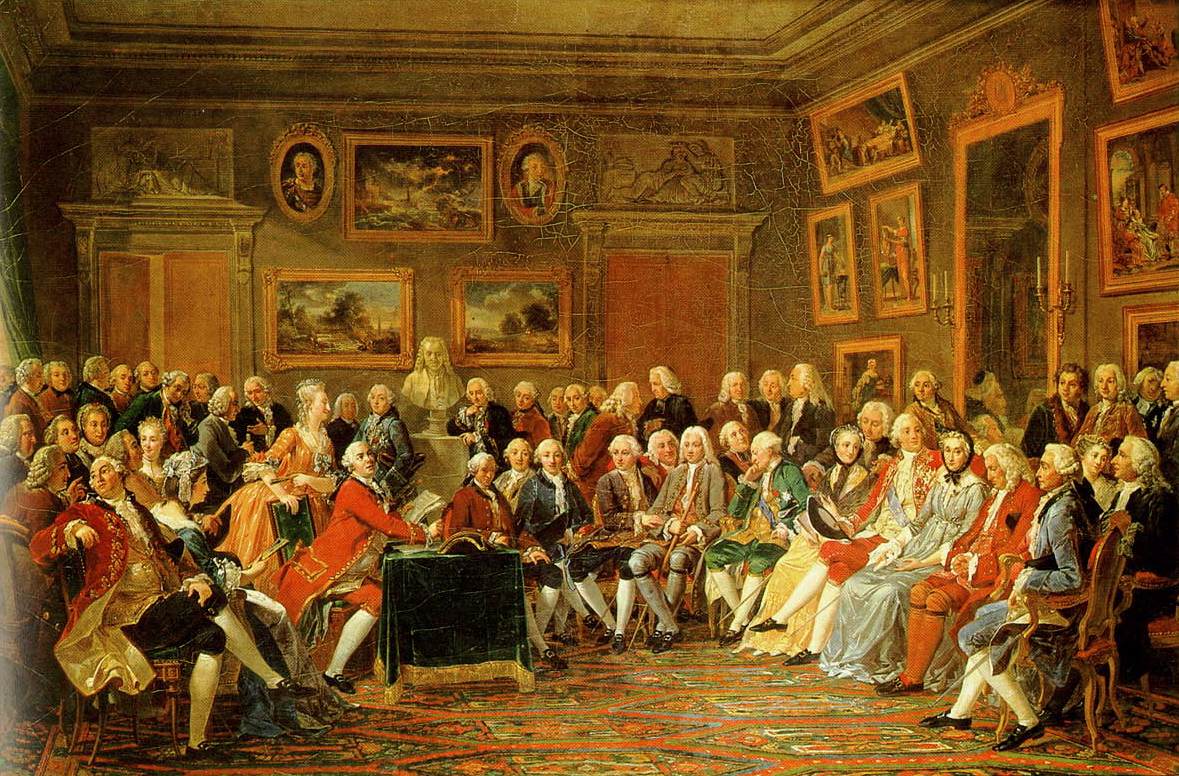At the beginning of the class, we've reviewed what we did on Monday.
That's Enlightenment and his features, in 18th century (century of lights):
–They used the Reason to learn and understand the world and improve it. Philosophers said that they wanted to "Eliminate the darkness of the world with the lights of reason". So they rejected all that couldn't been explained (superstitions, traditions, revelations, miracles...)
– They were tolerant of religions. No religion was superior to another. But they thought that religions gave more problems than positive things.– They rejected the authority principle, this means not to do things that always have been done only because it was traditional or someone ordered it.– They considered education the most important thing.– They criticized absolute monarchies and defended freedom of all the human beings.– They considered knowledge as the basis of happiness and they were very optimistic.
 |
| Source: https://commons.wikimedia.org/wiki/File:Salon_de_Madame_Geoffrin.jpg#/media/File:Salon_de_Madame_Geoffrin.jpg |
 | |
| KANT. Source:
|
 |
 |
| Source: www.pinterest.com |
ACQUIRE: Adquirir.
AUTHORITY PRINCIPLE: Principio de autoridad.
BIASED: Tendencioso.
GRANT: Beca.
IN INSTALMENTS: A plazos.
PURSUE: Consecución, alcanzar un objetivo.
PRECAUTION: Precaución.
TRUST: Confiar.
TAX FRAUD: Fraude fiscal.
TIME BANK: Banco de tiempo.
WILLING TO: Dispuesto a.
-----------------------------------------------------------------------------------------------------
And here you have a very beautiful picture that I've found looking for images of Enlightenment!

-----------------------------------------------------------------------------------------------------
And here you have a very beautiful picture that I've found looking for images of Enlightenment!

Source: http://www.ishafoundation.org/blog/sadhguru/masters-words/sadhguru-enlightenment-experience/